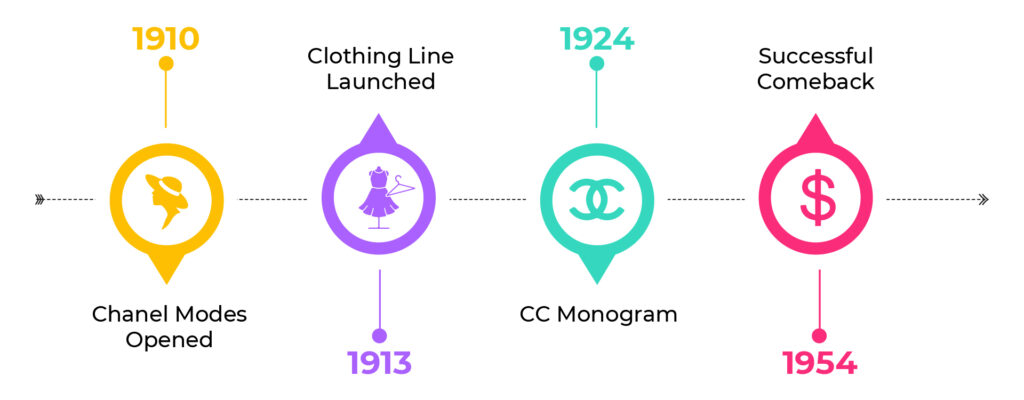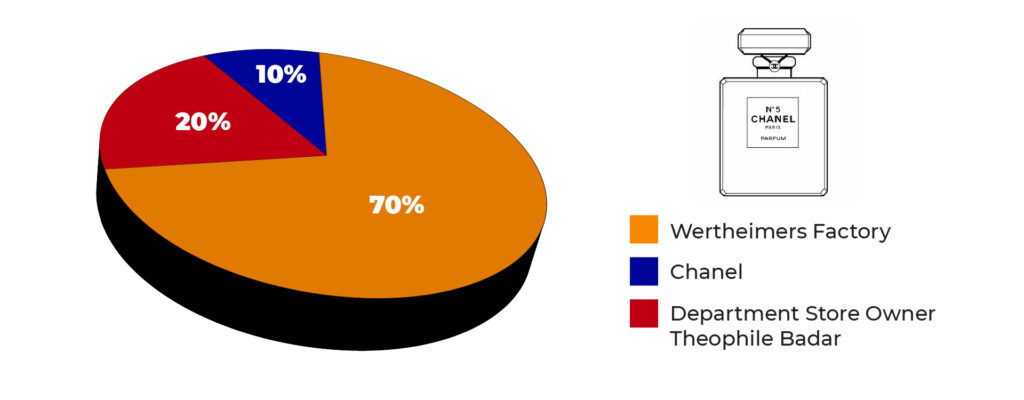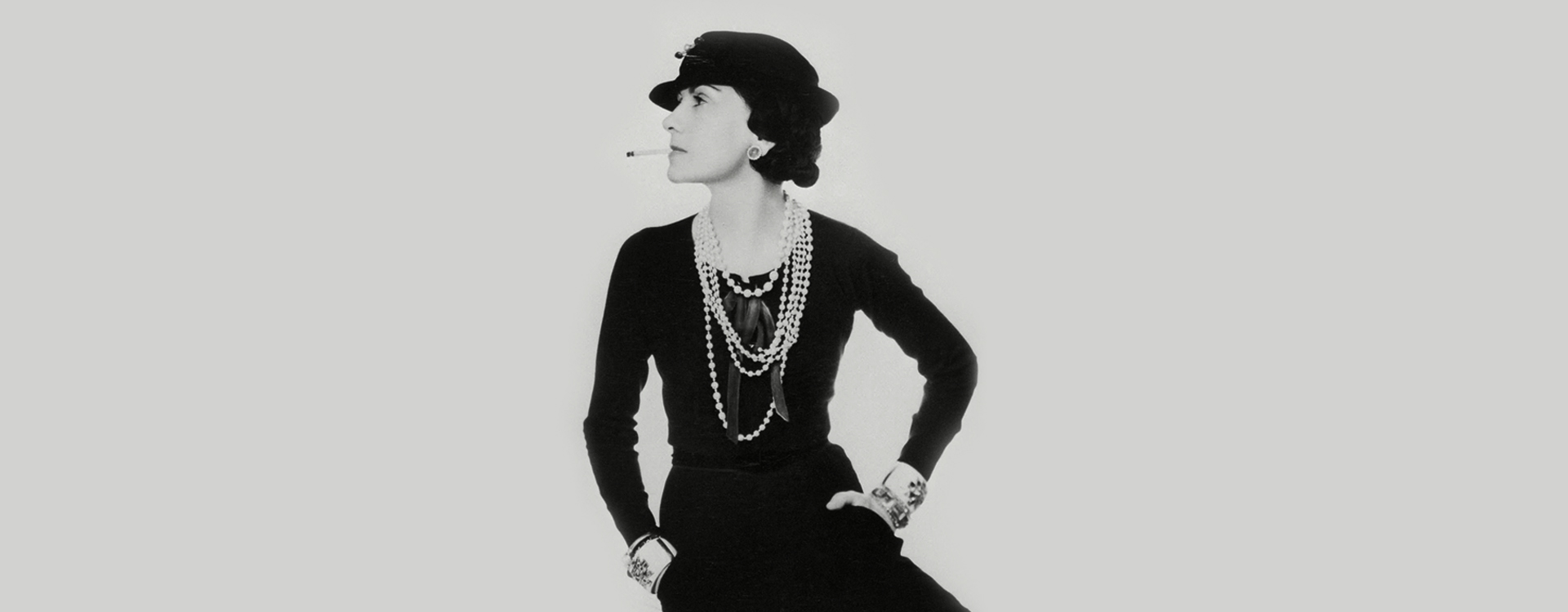Coco Chanel, the fashion legend, whose name resonates in the world of fashion even today after nearly a century of the brand’s existence has left an indelible mark in the global fashion business. Looking back at Gabrielle Bonheur Chanel’s career, she rose from being a seamstress to a French fashion designer and a successful businesswoman. Gabriele’s hobby of designing hats evolved into a commercial enterprise in the early 1900’s. She became a licensed milliner (a person who designs, makes, and sells women’s hats) in 1910 and opened a boutique in Paris named Chanel Modes. Chanel’s millinery creations flourished as famous personalities like actresses, models started wearing her hats and popularized it.
‘‘
Chanel taught us diversification is not only the best way to expand your product range, it ensures financial stability
Chanel’s journey to becoming a fashion ‘icon’
From accessories to couture, Chanel in 1913, soon launched her clothing line – deluxe casual clothing suitable for leisure and sport for women rep. She ventured on a completely different league, creating a market where no one treaded before and replacing the “corseted silhouette”. Her boutique’s address was a prime fashion high street of Paris that previously housed an established clothing business. She sold hats, sweaters, jackets, and mariniere, the sailor’s blouse. She modelled her clothes on her sister and aunt who paraded through the town and on its boardwalks, advertising the Chanel creations.
The Chanel couture became a profitable business enterprise, by 1935 employing 4000 people. She targeted the rich and wealthy as her products went from street wear to high fashion. A prolific fashion creator, Chanel expanded her creative influence beyond couture clothing, realizing her design aesthetic in jewellery, handbags and perfumes. Her signature scent Chanel No.5, is an iconic product endorsed and loved by A-list celebrities like Marilyn Monroe, Charlize Theron. Chanel designed her famed interlocked- CC monogram, which has been in use since the 1920s.
Chanel’s concept of the little black dress (LBD), is cited as a great contribution in the fashion lexicon, a style worn to this day.
Coco Chanel became a prominent designer around the world as her brand mirrored the image of the new age women: confident, independent, provocative and rebellious. She started selling clothes made from cheap jersey material for exorbitant prices and targeted women with money as her audience. Since she was offering something new, and aspirational they were willing to pay a premium price. Her brand created an aura that her customers wanted for themselves. The reason she became an iconic designer of her time.
Facing the Competition
Post World War I, Chanel was the undisputed queen of Parisian fashion. She captured a major share of the market with almost no competitor for over two decades. For the first time in 15 years she faced a real competitor by the name of Elsa Schiaparelli and later Christian Dior and Cristobal Balenciaga among many others. Schiaparelli’s style statement in couture was innovative and surreal, won critical acclaim and generated enthusiasm in the fashion world. But Chanel’s fashion stayed intact – functional, simple and modern.
Chanel collaborated with theatre, ballets and movies, and created designs for artists which was mocked by critics. Chanel’s place on the throne of haute couture was threatened by her contemporaries. In 1939, at the beginning of World War II, Chanel closed her shops, as a result of which 4000 female employees lost their jobs.

The Battle over Chanel No. 5
There was a legal fight to take control of Parfums Chanel – Chanel No. 5 between French businessman Pierre Wertheimer and Chanel. Finally, Wertheimer and Chanel came to a mutual agreement on renegotiating the original contract wherein her future share would be two percent of all Chanel sales worldwide. Wertheimer also agreed to pay all of Chanel’s living expenses for the rest of her life. In 1947, Chanel received wartime profits to the tune of $5 million from the sale of Chanel No.5. Her earnings were projected at $25 million a year, making her at the time one of the richest women in the world.
Gabrielle Coco Chanel had an incredible business sense and the way she built her business is still applicable to young entrepreneurs starting up today. She was a shrewd businesswoman and very hardworking. She learned all the business tricks first hand from scratch.
Lessons Entrepreneurs can learn from Coco Chanel
Find the market gap and fill it
In her shop in Deauville, she offered luxury clothing for leisure and sport. She created her own unisex, easy going style and turned into contemporary clothes for women. Swimsuits for women that were non-existent at the time, Chanel invented it and created a huge demand in women. This was the gap she found and fulfilled it. Chanel had a keen eye towards seeing such opportunities and providing for it. She became a style icon that many emulated, be it her hair cut, or her dressing style. She became more visible in the media, party circuit to flaunt her look to lure and widen the customer base. She even started giving away her clothes for free to induce a sense of desire in people.
Therefore, one needs to find a niche in the existing market and fill it with your strength. Building mysticism and curiosity around the brand is pertinent to draw an audience.
Chanel was creating a demand for something that was new, made from inferior material but she still managed to create a want. The lesson here was build demand and attraction around what you sell. Influencer marketing and blogger outreach in today’s social media generation.
Innovation needs a vision
Chanel gave women of her times the chance to see the other side of clothes and fashion. At a time when corset and tight dresses were norm of the day, Chanel made people realise there was a different way of dressing. Women fell in love with her ideas, brand. Innovation works when you make people see the world in a different way.
Name is everything
When people see the Chanel brand, they think of the women behind the brand, the reason it happens is because Coco Chanel put in so much effort into creating her brand, she became a popular personality hobnobbing with the upper echelons of the society. She positioned her brand into a luxury one targeting the ultra-rich people.
The lesson is, focus on why your product stands out. Your name is what you make of yourself so put in all efforts into making one.
‘‘
One needs to find a niche in the existing market and fill it with your strength
Power in diversifying and perfect integration
Chanel taught us diversification is not only the best way to expand your product range, it ensures financial stability. If one of the multiple things you are working on falls through you will always have a backup.
She ventured into perfume making, she got herself involved at every step of the making of the iconic perfume which was named Chanel No.5. From the choice of fragrance to the shape of the bottle. From its making to designing of the bottle to naming it, from marketing to its selling she was deeply involved in the entire process ensuring the integrity of the brand. Chanel partnered with a French businessman who was expert in the field of making perfumes. Therefore, even today after 100 years, Chanel No.5 is the most selling perfume in the world. According to statistics, it sells one bottle every 30 seconds.
Diversification doesn’t necessarily mean success at every product line, but as long as you take quality control the chances of success gets higher. Unlike many designers of today who dilute their brands either by not getting involved into the last detail or by licensing to people who don’t understand the essence of the brand.
You can rise from the Fall
Coco Chanel reigned at the top for two decades, then she remained in a self-imposed exile for 14 years. At 70, she made a comeback but by that time she was out of the business and had to start all over. Other fashion houses had gained popularity in France, so she was panned out by critics for getting her same old style. Chanel then decided to target the American market, as the rich women in America resonated her style profile that was- athletic, easy, practical. Her new line created a huge sensation and she re-established herself within a year of her arrival. Known personalities like Jacqueline Kennedy wore her trademark simple and classic suits, Chanel was reclaimed and came back strong.
The lesson here is Ideas can change lives. Know your target audience, an intensive market research is what sets a powerful brand apart from the rest.
Creative Advertising
Chanel No.5 was, “A very improper perfume for nicely brought-up ladies.” This tagline goes with the rebelliousness of the brand. Invest time and money into developing a great advertising- a good catchline for your brand that goes with the essence of the brand.
Do the unexpected that wows all
Chanel took the color black- a color of mourning and turned it into a glamourous evening dress. What can you do that is unexpected? How can you take existing resources and use them in a different way to provide a product or service that no one has thought before? Invest time in thinking how you can flip the table.
The power of a good story
Gabriele Chanel’s personal story draws sympathy and inspires many. Her background of living in an orphanage and being abandoned by her father is what people feel sorry for and at the same time take inspiration from. So invest in your story as the founder of your company and the company story that you communicate to the market. A compelling story that one wants to be associated with.

Long term plan
Chanel No. 5 perfume remains the major source of revenue for the company. Chanel was farsighted. She knew this product would yield massive profits in the longer term. Chanel had the deal renegotiated multiple times but still ended up earning 10% of the profits, 70% goes to Wertheimers whose factory produces the perfumes, they continue to control the perfume company today. The rest 20% of profit is shared by department store owner, Theophile Badar. The lesson here is no matter how great the equity seems at the start of a business, only make a deal you can live with long term.
Take Risks
Chanel initially started out selling women’s hats in her high street Paris store. She then ventured into clothing, which soon became very popular with women. She never tried to fit in on the old-fashioned corseted clothing that was the trend at that time. She took risk by introducing something that was never seen before. She always ventured territories nobody treaded before- swimsuits, signature perfumes. She took the risk by entering these segments without testing the market and succeeded.




